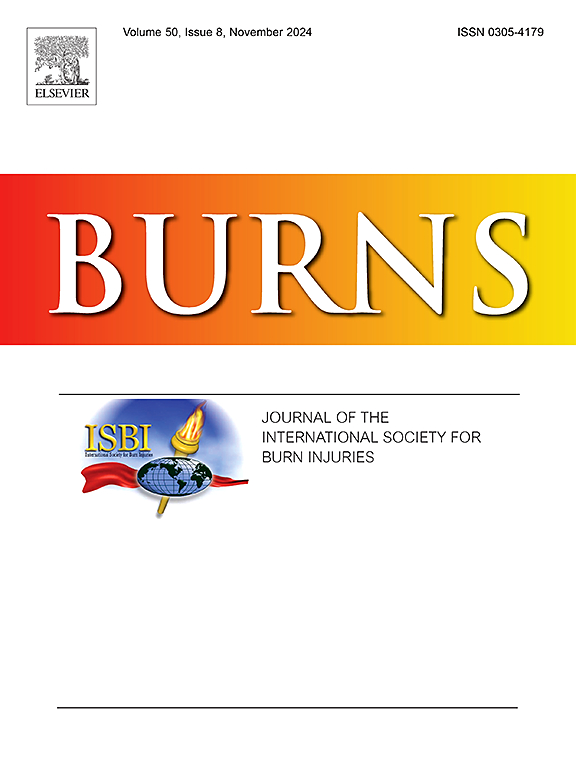连接粘附分子A/miR-106b轴对糖尿病创面愈合的转录后调控
IF 3.2
3区 医学
Q2 CRITICAL CARE MEDICINE
引用次数: 0
摘要
尽管分子科学和生物材料技术取得了进步,但糖尿病伤口愈合受损的机制仍不清楚。在这项研究中,我们研究了JAM-A对糖尿病伤口愈合的转录后调控。方法采用小鼠创面模型、苏木精染色、伊红染色和抓伤实验研究JAM-A - 3′-UTR对糖尿病创面再上皮化的影响,通过RNA pull - down、microRNA-seq和生物信息学分析鉴定关键miRNA参与者并预测其靶基因。采用原位杂交、免疫组织化学、western blotting和聚合酶链反应(PCR)证实了JAM-A 3 ' -UTR在糖尿病患者中的选择性剪接。通过CCK-8增殖实验、抓伤实验、PCR、western blotting、双荧光素酶实验研究miR-106b-5p修饰对细胞增殖和迁移的影响,确认靶基因。结果jam - a - 3′-UTR促进糖尿病小鼠伤口的再上皮化。在糖尿病条件下,JAM-A的3 ' -UTR发现剪接缩短,导致miR-106b-5p过度释放,而miR-106b的启动子被激活。此外,上调的miR-106b-5p通过抑制靶基因PTEN/TIAM1,调节AKT和RAC1通路,过度激活细胞增殖,抑制糖尿病创面角质形成细胞的迁移,从而损害创面再上皮化。我们在糖尿病患者中发现了JAM-A 3 ' -UTR的选择性剪接,这导致了miR-106b的过度释放。miR-106b上调可降低其靶基因PTEN和TIAM1的表达,导致角化细胞增殖过度活跃,迁移受损,从而导致创面再上皮化失调。本文章由计算机程序翻译,如有差异,请以英文原文为准。
Post-transcriptional regulation of diabetic wound healing by junctional adhesion molecule A/miR-106b axis
Background
Despite advancements in molecular science and biomaterial technology, the mechanisms underlying the impaired healing of diabetic wounds remain unclear. In this study, we investigated the post-transcriptional regulation of diabetic wound healing using JAM-A.
Methods
Mouse wound models, hematoxylin and eosin staining analysis, and scratch wound assays were used to investigate the effects of JAM-A 3′-UTR on the re-epithelialization of diabetic wounds, whereas RNA pulldown, microRNA-seq, and bioinformatics analyses were performed to identify key miRNA players and predict their target genes. In situ hybridization, immunohistochemistry, western blotting, and polymerase chain reaction (PCR) were used to confirm the alternative splicing of JAM-A 3′-UTR in diabetic conditions. CCK-8 proliferation assays, scratch wound assays, PCR, western blotting, and dual-luciferase assays were performed to study the changes in cell proliferation and migration induced by miR-106b-5p modification and confirm the target gene.
Results
JAM-A 3′-UTR accelerated re-epithelialization in diabetic mouse wounds. Shortened splicing was found in the 3′-UTR of JAM-A under diabetic conditions, leading to the excessive release of miR-106b-5p while the promoter of miR-106b was activated. Furthermore, upregulated miR-106b-5p over-activated cell proliferation and inhibited cell migration in diabetic wound keratinocytes by suppressing the target gene PTEN/TIAM1 and regulating the AKT and RAC1 pathways, thereby impairing wound re-epithelialization.
Conclusions
We identified alternative splicing of JAM-A 3′-UTR in diabetic conditions, which caused the excessive release of miR-106b. Upregulation of miR-106b reduced the expression of its target genes, PTEN and TIAM1, which led to hyperactive proliferation and impaired migration of keratinocytes, thereby dysregulating wound re-epithelialization.
求助全文
通过发布文献求助,成功后即可免费获取论文全文。
去求助
来源期刊

Burns
医学-皮肤病学
CiteScore
4.50
自引率
18.50%
发文量
304
审稿时长
72 days
期刊介绍:
Burns aims to foster the exchange of information among all engaged in preventing and treating the effects of burns. The journal focuses on clinical, scientific and social aspects of these injuries and covers the prevention of the injury, the epidemiology of such injuries and all aspects of treatment including development of new techniques and technologies and verification of existing ones. Regular features include clinical and scientific papers, state of the art reviews and descriptions of burn-care in practice.
Topics covered by Burns include: the effects of smoke on man and animals, their tissues and cells; the responses to and treatment of patients and animals with chemical injuries to the skin; the biological and clinical effects of cold injuries; surgical techniques which are, or may be relevant to the treatment of burned patients during the acute or reconstructive phase following injury; well controlled laboratory studies of the effectiveness of anti-microbial agents on infection and new materials on scarring and healing; inflammatory responses to injury, effectiveness of related agents and other compounds used to modify the physiological and cellular responses to the injury; experimental studies of burns and the outcome of burn wound healing; regenerative medicine concerning the skin.
 求助内容:
求助内容: 应助结果提醒方式:
应助结果提醒方式:


